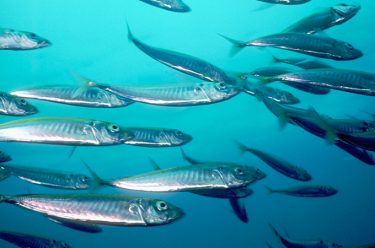
Fisheries managers typically strive to strike a delicate balance between two, often competing, types of needs: the needs for fishermen’s profits and the needs for the planet. But in 1994, entrepreneur John Elkington posited that true sustainability requires consideration of a third “P” — the needs of the people. In making this argument, he coined the term “the triple bottom line.”
In a new study, an interdisciplinary group of researchers used Pacific herring in Haida Gwaii, British Columbia, as a case study for modeling the implicit tradeoffs within the triple bottom line that result from various fisheries management decisions. They found that considering spatial dynamics is a key component of this modeling process — for example, considering the geographic areas of the fish populations, the areas that are important to the various communities of people, and the areas that are impacted by management decisions.
Published Sept. 30 in the journal Fish and Fisheries, the study is one of the outcomes of the Ocean Modeling Forum, a collaboration between the University of Washington and The Nature Conservancy that aims to use models to provide insights on how to best address complex ocean issues.
“We started from qualitative ethnographic information, including local and traditional knowledge, to identify indicators linked to various benefits and values of herring,” explained co-author Melissa Poe, a social scientist at Washington Sea Grant based at the University of Washington. “We then surveyed different user groups to generate quantitative scores for select indicators to determine outcomes for various fishing sectors, abundances of herring and places of harvest.”
No one management strategy within the study’s model optimized the benefits to all of the people, planet and profit factors. However, having a framework to understand the relative tradeoffs to each of these factors is the first step toward responsibly balancing them, the researchers said. The model developed in this case study could be used not only to evaluate management strategies for Pacific herring fisheries as managers consider reopening them, but also for other fisheries that face similar dilemmas across the globe.
“This work has the potential to be game changing,” said co-author Phil Levin, professor at the School of Environmental and Forest Sciences and lead scientist at the Nature Conservancy. “For years researchers have talked about the triple bottom line but lacked the ability to really assess it. By directly linking quantitative fisheries models for social and cultural outcomes, we now have the ability to truly evaluate the full impacts of alternative management strategies.”
Read more at UW News »
